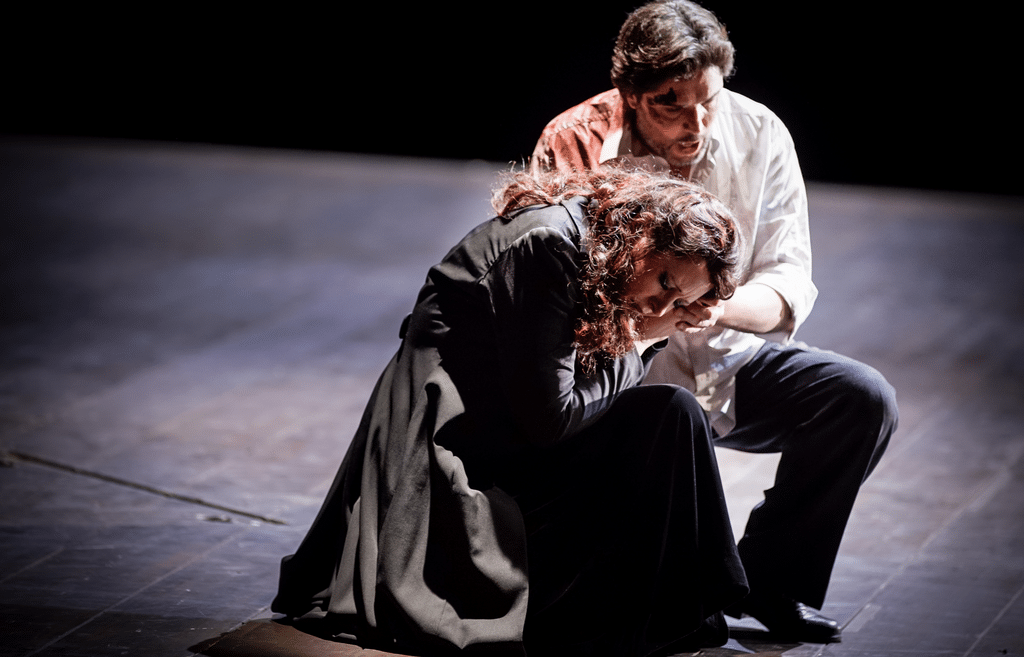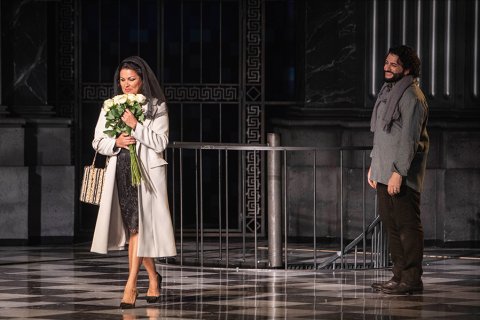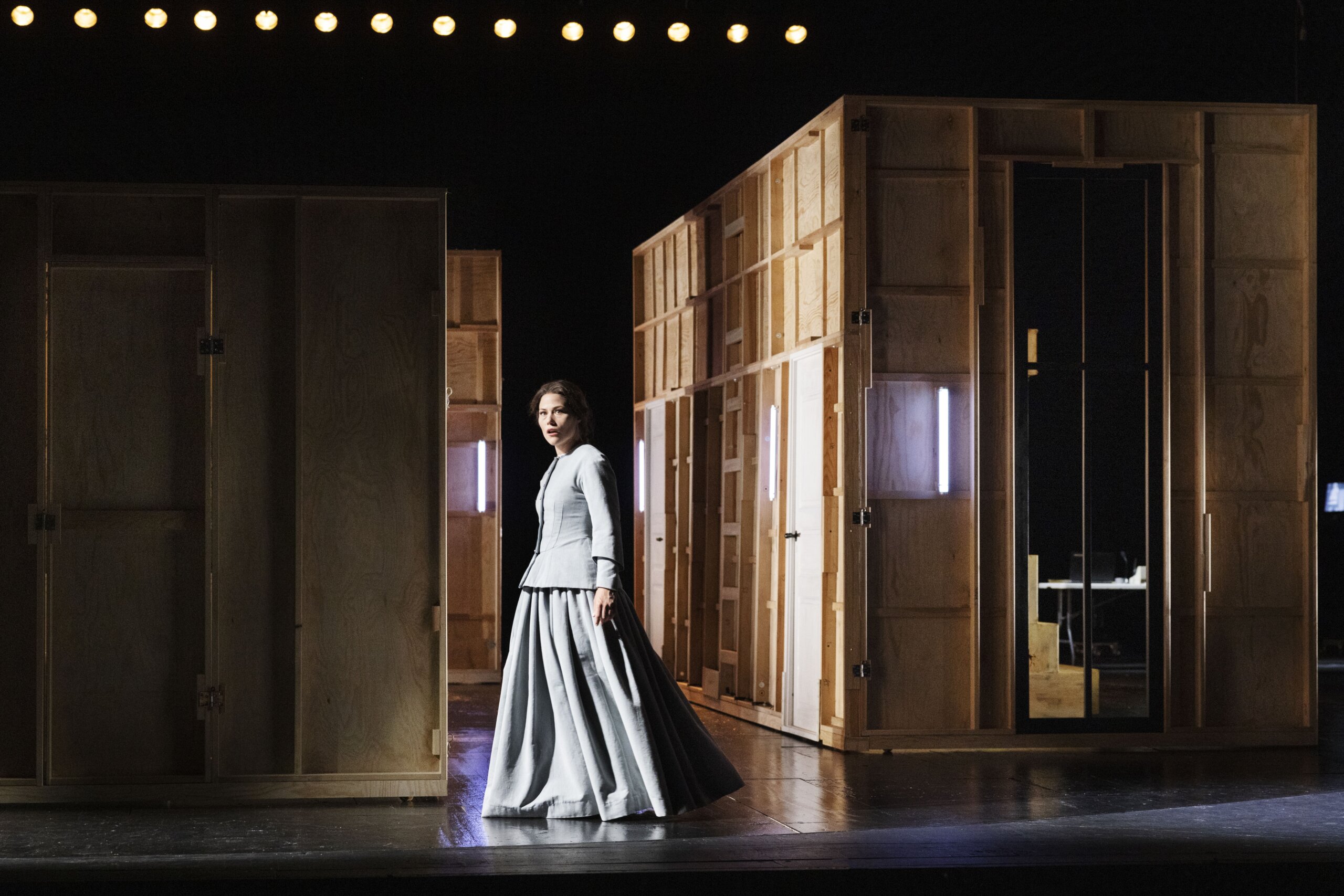TOSCA • HAMBORG
★★★☆☆☆

Photo: Arno Declair
REVIEW TOSCA HAMBURG: LESS IS NOT ALWAYS MORE.
Tosca remains the world’s best opera. Even if the Canadian star director Robert Carson (57) has turned down the crank in his version of Puccini’s masterpiece at the Staatsoper in Hamburg. A stripped-down set design cultivates the idea of a chamber play where emotions are sharply focused – but also takes away some of the magic of an evening at the opera.
Tosca has it all: a sharply cut plot, a grippingly beautiful, sentimental orchestration, tear-inducing hit arias and a manageable cast of main characters caught in a recognizable human dilemma.
Robert Carsen has an impressive CV with productions at all the major venues, including The Met in New York, La Scala in Milan, Seebühne in Bregenz, Bastille Opera in Paris, La Fenice in Venice and the Salzburg Festival.
Carsen is indisputably one of the great names of our time, and a seasoned stage director who knows what he’s doing. Why am I left with an unfulfilled feeling afterwards?
It’s certainly not for lack of strong singers in the lead roles.
English tenor Adam Smith is a slightly austere Caravadossi, with distinctive phrasing and a somewhat sharp timbre. In stage presence, he may resemble a gym teacher more than a painter, but his assured rendition of the marvellous aria Lucevan le Stelle, in which the doomed artist bids farewell to life, draws massive applause from the audience.
As Tosca, American Aylin Perez is a pure delight with her effortless soprano and obvious beauty in beautiful light blue (!) dresses. There’s not a dry eye in the house after Vissi d’Arte, which sits exactly where it should, with adequate orchestral playing from the Hamburg Philharmonic.
Best of all, however, is the Milanese baritone Franco Vassallo as Scarpia, who is well-sung with a delicious, rounded timbre and exactly as vile as the part demands.
Everything is thus in perfect order – but I have a problem with the staging, which I understand the intention of, but do not applaud the effect of.
Less is more, as the saying goes, when staging a connoisseur’s mine – but in this case, less is actually less.
The church room (the atmospheric Sant’Andrea della Valle not far from Piazza Navona), which Caravadossi decorates and where Angelotti rushes in to hide, has been replaced by a kind of conference hall with rows of chairs that could have been in the Bella Centre.
The magnificent room in Palazzo Farnese just behind Campo di Fiori appears to be undergoing renovation and is dominated by a large, grey, unpainted plasterboard wall with a no smoking sign. A rather poor setting for the iconic scene where Tosca stabs Scarpia to death.
The top of the Castel Sant’Angelo fortress overlooking the river that runs through Rome, where the final scene takes place, is replaced by a wooden floor and a brick wall, left mostly in darkness to focus attention on the human tragedy unfolding. Hmm!
Well, yes, you can, but the visual experience is part of the operatic magic, and Carson has made an unnecessary sacrifice by turning down the ‘authentic’ atmosphere of Catholic opulence, palazzo aura and gloomy prison castle with rooftop execution ground.
This Tosca is a Hamburg repertory production, almost 25 years old, that could do with a new take.
There are three stars from GOT TO SEE THIS for a production with good musical calories, but which disappoints somewhat in the scenic execution.




